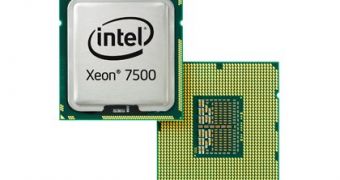Since there is a constant search for better high-performance computers, IBM decided to start working on its newest supercomputer, one that is set to be based in the Leibniz Supercomputing Centre (LRZ) in Garching, Germany.
Currently, the most powerful supercomputer in existence, constructed with both microprocessors and graphics processors, achieves 2.5PetaFLOPS of performance.
IBM has now decided to create an even more powerful installation, one capable of touching the 3PetaFLOPS barrier.
The general purpose supercomputer will go by the name of SuperMUC and will utilize Intel Xeon microprocessors.
Based on the IBM System x iDataPlex, it will boast over 1,400 next-generation Intel Xeon chips, as well as water cooling, which will enable a higher energy efficiency.
Since supercomputers are known for their massive power consumption, power consumption that is mostly owed to the many air cooling installations, this is a very important asset of the SuperMUC.
"SuperMUC will provide previously unattainable energy efficiency along with peak performance by exploiting the massive parallelism of Intel’s multi-core processors and leveraging the innovative hot water cooling technology pioneered by IBM,”said. Arndt Bode, chairman of the board of directors of LRZ.
“This approach will allow the industry to develop ever more powerful supercomputers while keeping energy use in check," Bode added.
“Intel's unique partnership with IBM, together with our next generation microprocessor technology, has led to the development of the most innovative, capable and energy efficient supercomputing solution,” said Rajeeb Hazra, general manager of high performance computing at Intel.
“We are thrilled to be part of this collaboration with IBM and LRZ and believe that it will set a new standard for general purpose academic and government supercomputing installations," Hazra went on to saying.
No doubt the low number of processors and the lack of GPU compute boards (like NVIDIA's Tesla 2000) will come as a surprise, though it will be interesting to see how IBM can pull off the 3 quadrillion FLOPS.

 14 DAY TRIAL //
14 DAY TRIAL //